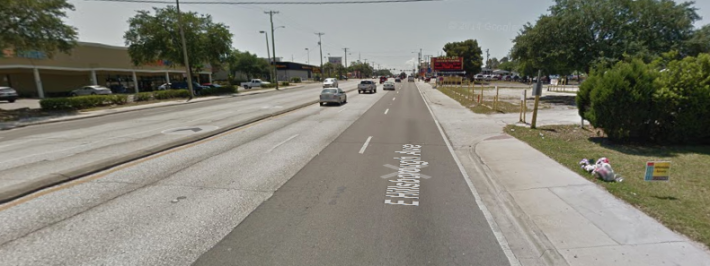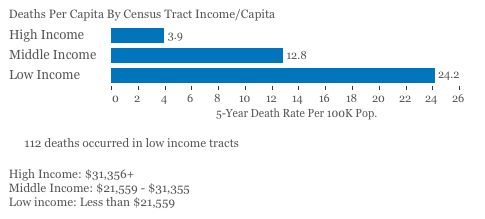
You'd be hard-pressed to fund a more deadly place for pedestrians in all of the U.S. than Tampa's Hillsborough Avenue.
On an eight block stretch of this road, 21 bicyclists and pedestrians were hit by drivers between 2008 and 2012. Two of those people, 15-year-old Middleton High School students Shenika Davis and Norma Velasquez-Cabrera, were killed in separate incidents. Another teen, 18-year-old William Hogan, was gravely injured just a month after the second death.
And that's not the only dangerous road in this low-income community on Tampa's east side, according to City Council Member Frank Reddick, a lead advocate for safer conditions. Not far away, on 43rd Street, a woman pushing her baby in a stroller was struck and killed recently. The intersection of 34th and Chelsea Streets is another problem area. There have been seven collisions there over the last few years, including a triple fatality -- the victims were motor vehicle occupants -- during a short time span.
Tampa's Fifth Ward -- Reddick's district and one of the city's poorest -- exemplifies the neighborhoods Governing Magazine singled out in a recent study that found that poorer communities are disproportionately affected by unsafe road conditions. The study found that pedestrians die at about double the rate in low-income neighborhoods compared to wealthy ones.
The Tampa area, Governing reports, has the second highest pedestrian death rate in the nation. In the metro area, 403 pedestrians were killed between 2008 and 2012. And poor neighborhoods, like Tampa's Fifth Ward, are paying a high price. In Tampa's Hillsborough County, people living in low-income neighborhoods are six times more likely to be killed while walking than those living in wealthier areas, according to the report.

Reddick was aware of the problem before he became an elected official. The local press dubbed him a "crusader" for safer conditions. But it's a constant battle to get the help he needs to keep his constituents safe. The problem, he says, is a lack of resources devoted to the neighborhoods he represents.

"It’s just a true reflection of what the [Governing] article was talking about," he said. "The problem is that not enough resources have been placed in these low economic communities. They don’t have a lot of sidewalks, they don’t have street crossings, they don’t have proper lighting. They have been neglected for so long."
In a Google Maps image of the crash scene at 34th and Chelsea, you can see where pedestrians have worn a path in the grass where a sidewalk should be. In those images you can also make out a small memorial to those killed.
Fortunately, Reddick says the community has made a little progress lately. A four-way stop is going in at 34th and Chelsea, and the state is adding a signalized crosswalk near the spot where Davis and Velasquez-Cabrera were killed on Hillsborough. The state has also stepped up efforts to protect pedestrians and cyclists following several years of reports that found Florida to be the most deadly state for vulnerable road users.
Reddick says these interventions, unfortunately, have been too little, too late for some of his constituents.
"I’m sorry to say it took some deaths, people getting killed, for government to become a little more aggressive," he said. "We need resources in this community. They need to find resources to help improve the conditions."





